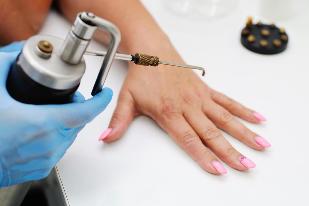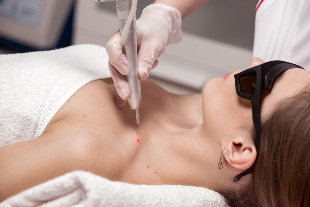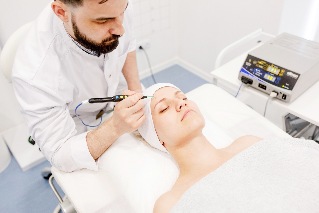It turns out that skin growths occur in almost everyone. But not everyone pays attention to them, linking the appearance of a spot with a new mole.
This is not entirely true. In most cases, these are benign formations. Doctors recommend removing them. A dermatologist or venereologist will tell you how to remove the papilloma.

Causes of papilloma
Skin growths appear under the influence of human papillomavirus. Under one name there are about 100 strains of viruses that provoke the appearance of neoplasms of various shapes, colors and sizes. These viruses enter the skin or mucous membranes and remain forever.
Currently, pharmacists are unable to provide a drug that can get rid of this pathogen. But doctors have found ways to fight HPV, which we'll talk about later.
For a long time, the human defense system has been able to inhibit the vital activity of the virus, so the first symptoms of the disease appear after a week or even years. It all depends on how strong a person's immunity is.
If the immune system is able to deal with the virus, then why do papillomas appear?As mentioned above, the virus stays in the body forever and once the immune system weakens, it immediately activates and creates growths on the skin.
Immunity is weakened for the following reasons:
- Hormonal disorders (pregnancy, breastfeeding, taking hormonal drugs).
- The presence of bad habits (drug addiction, smoking, alcoholism).
- Unbalanced diet.
- Exacerbation of chronic or congenital diseases.
- Overweight.
- Long-term drug use.
- Promiscuous sex.
- Frequent colds.
If the human body has been exposed to these factors, neoplasms appear. Doctors recommend the removal of papillomas, although they are not life-threatening.
Why remove warts and growths
There are several consequences that can occur if the papillomas that appear are not treated in time.
- Some neoplasms occur under the influence of oncogenic viruses. Such growths easily degenerate into a malignant formation and as a result cancer develops.
- Papillomas usually occur where the skin comes in contact with clothing. This means that the accumulation is permanently damaged. A small wound or fissure is the door to secondary infection. Damaged papillomas do not heal well, sometimes a scar can form there. In the worst case, suppuration can develop, which is fraught with blood poisoning.
- Often patients go to the doctor when the disease is very advanced, then there are so many growths that it is better to choose surgical removal. Doctors choose this method as a last resort.
- Lack of treatment is also dangerous because you can infect family and friends.
How neoplasms are treated
Traditional medicine offers both drug treatment and one of the methods to remove papilloma. It is desirable that the treatment be complete. This will help reduce the risk of recurrence of the tumor.In some cases, after taking the medication, the growths disappear on their own and it is not necessary to choose a method to remove the papilloma.This can happen inthis case:
- Neoplasms are very recent (recent).
- Human immunity works well.
Medicines
As mentioned above, there is no cure for HPV. But doctors prescribe common antiviral drugs that are good for reducing the activity of the pathogen. And then the question rests on human immunity. If the body's protective function is impaired, your doctor will advise you to take immunostimulants, immunomodulators and vitamin complexes.
In pharmacies you can find drugs that will help eliminate papilloma.These are ointments, creams, concentrated solutions. They are applied directly to the formations.It is not worth prescribing such treatment to yourself or others.These products contain a lot of corrosive acids or bases.
Using them without consulting a doctor can lead to:
- Papilloma damage.
- Increase the number of entities.
- Burns for healthy skin.
- Scars on damaged areas.
Papilloma removal methods
Modern medicine offers several effective ways to remove tumors. They are painless and effective. If there are many growths or they are large, then it is necessary to do several procedures, but in case the papillomas are small and appear relatively recently, then one visit to the manipulation room will suffice.
Surgery

Surgical removal of the papillomais rarely chosen as a radical treatment. The procedure is performed in the operating room under general anesthesia. The scars usually remain after the operation.
The indication for this delete method will be:
- Large area of lesions from neoplasms.
- Significant growth rates.
- No other methods can be used.
Compared to surgery, we will learn about modern methods of papilloma removal below, we will pass much faster and we will give good results.
Cryodestruction
As a result of this procedure, the papilloma is cauterized with liquid nitrogen.The patient calls this therapy freezing. Under the influence of low temperatures, the neoplasms are destroyed from the inside and after a while they disappear.
The procedure works, but there are some drawbacks:
- It is difficult even for an experienced specialist to control the depth of impact. Therefore, it is possible to burn healthy areas of the skin if the substance goes too deep or you will need to undergo a second procedure. In this case, the low temperature does not affect the entire papilloma and areas of infection remain.
- Scars may appear.
- Pain during the procedure (personal sensitivity to pain)
Laser therapy
This is the most popular procedure.Laser papilloma removal is very fast and almost painless. If the manipulation is performed on very sensitive areas of the skin, then local anesthesia is used.

The procedure is performed as follows:
- The doctor gradually removes each layer of the affected cells with a laser.
- There is no blood as the beam immediately compresses the vessels.
This way you can remove absolutely all education and not leave even the smallest infected area. Recovery after the procedure takes place in a week. It is important that scars or scars after laser removal are extremely rare.
Electrocoagulation
This procedure, like the previous one, is very popular. Papillomas are removed with a high-frequency electric current. The procedure is absolutely safe, so it is recommended for children.For small patients, the procedure is performed under general anesthesia. Local anesthesia is used for adults
Electrocoagulation removes both large and small formations. In this case, after removal, the growth can be examined for cancerous changes, as the papilloma is not burned, but removed. Also, bleeding during the procedure is absolutely ruled out, as all vessels are treated immediately.
The disadvantage of such removal will be the possibility of scarring or recurrent papillomas.
Radio wave offset

For this procedure, the doctor uses a special knife that creates radio waves. Under their influence, the papilloma is removed.Due to the high accuracy of the procedure, healthy tissues are not injured and therefore there are no burns or other injuries.
Relapses after such a procedure are very rare. Local anesthesia is recommended to relieve pain, although patients with a high pain threshold do not experience any discomfort.
Small neoplasms of benign nature are removed using the radio wave method. Removal of malignant tumors in this way is contraindicated.
The better to remove this or that formation, of course, the doctor decides, comparing the possible negative consequences and the positive results of the procedures. At the same time, he makes the appointment of the procedure only after the test results.
To summarize, to have clean and good skin, you need to monitor your health. After treating a papilloma virus infection, your doctor may make the following recommendations:
- Seek treatment in time.
- Avoid indiscriminate sex.
- Power change.
- Get rid of bad habits.
- Play sports, but exercise should be moderate.
- Avoid stressful situations.














































































